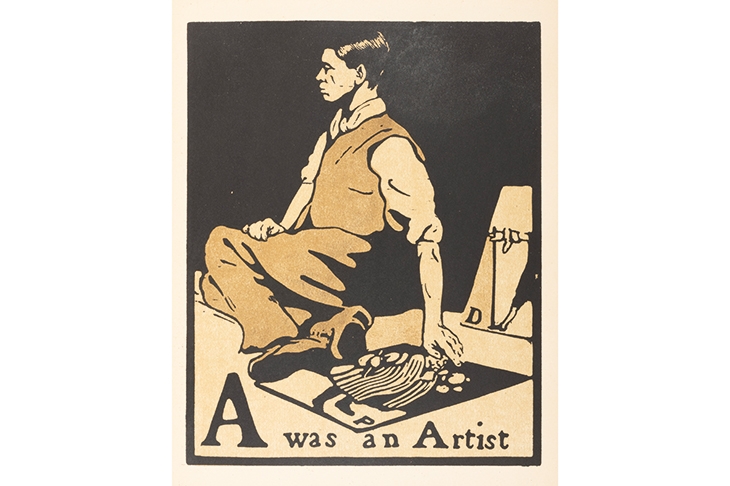The best double acts — Laurel and Hardy, Gilbert & George, Rodgers and Hart — are often made up of two quite different personalities. So it was with the painters William Nicholson and James Pryde, who worked together under the names of J. & W. Beggarstaff. Their similarities and dissimilarities are the subject of a highly entertaining exhibition at the Fitzwilliam Museum, Cambridge.
Nicholson (1872–1949) and Pryde (1866–1941) are sometimes dubbed the ‘Beggarstaff brothers’. They weren’t really siblings, but they were brothers-in-law. At the age of 21, in 1893, Nicholson eloped to Ruislip with Pryde’s sister Mabel. The couple set up house in an ex-pub, the Eight Bells at Denham, and their baby Ben (later to become a notable artist himself) was born the following year.
The collaboration between Pryde and Nicholson — the starting-point of the exhibition — began shortly afterwards. It didn’t last long, petering out before the end of the decade. But during those years Nicholson and Pryde produced a series of large scale-poster designs like nothing else in British art of that time.
These consisted of simple bold shapes made by gluing down pieces of coloured paper — an early type of collage. The best of the Beggarstaff posters — ‘Don Quixote’, for example, and ‘Children Playing’, both 1895 — have the oomph and impact of contemporary Parisian graphic art by Toulouse-Lautrec and Pierre Bonnard.
Which Beggarstaff did what is unclear. ‘One of us gets an idea,’ Pryde told the Idler magazine in 1896. ‘We talk it over, the other suggests an addition, the matter is reconsidered.’ Edward Gordon Craig, the actor, director and theatrical designer who commissioned the very first joint effort, a poster for Hamlet, thought Nicholson did most of the work.








Comments
Join the debate for just £1 a month
Be part of the conversation with other Spectator readers by getting your first three months for £3.
UNLOCK ACCESS Just £1 a monthAlready a subscriber? Log in